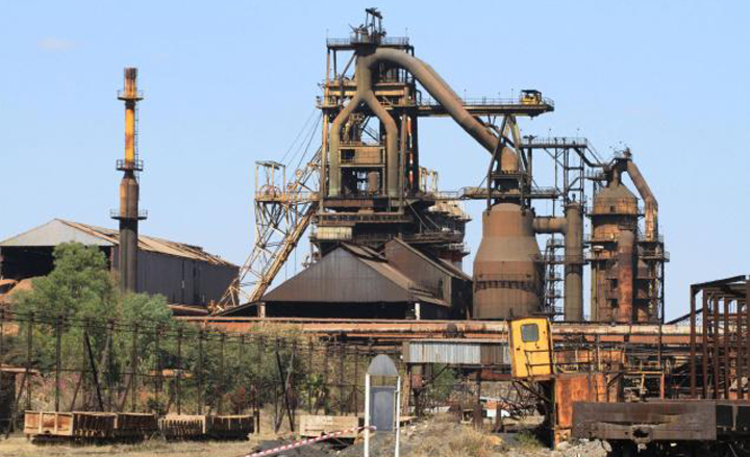The long journey of Zisco revival
It’s nearly two decades now with the Government trying to resuscitate the Zimbabwe Iron and Steel Company (zisco), which at some stage, was among Africa’s largest steel mills.
Since 2006, several offers for zisco were made by global steel giants including Essar Holdings, Jindal Steel & Power and Global Steel Holdings of India, but all collapsed partly due to lengthy approval processes.
zisco, a major foreign currency earner before independence in 1980, hasn’t produced since 2008 and its demise is largely blamed on mismanagement and lack of funds to upgrade the aging equipment. The plant had the capacity to produce one million tonnes of steel per year.
The iron and steel industry remains crucial for economic growth and development as it has major spin-offs to other industries upstream or downstream. It supports the energy sector through its high demand for energy inputs; the mining sector by providing raw materials such as ore and limestone and the manufacturing sector by supplying raw materials.
The construction industry and other sectors such as gas and chemical distribution highly benefit from the iron and steel industry.
As such, the collapse of zisco has been felt across the economy with companies such as Hwange Colliery Company Ltd, the National Railways of Zimbabwe, Sable Chemicals and its subsidiaries suffering a huge blow.
For instance, zisco was a major offtaker of coking coal that it processed into coke used in steel making, from Hwange. The NRZ provided bulk cargo services. Zimchem Refiners, a subsidiary of zisco which refines coke ovens by-products such as crude benzol and crude tar, equally suffered. Sable got its oxygen supplies from zisco cut off.
“The going down of zisco was a big blow to the economy,” Hwange managing director Dr Charles Zinyemba told The Sunday Mail Business on Thursday.
“It was of our major customers and we used to move significant volumes of coking coal using NRZ. If zisco is to come back, it will have a big impact on the economy.”
Analysts say it is critical to speed up the revival of zisco, taking into account global dynamics in the global steel industry.
“We have been out of this business for a long time and a casual approach will not help. The global iron and steel industry landscape has changed,” analyst Mr Carlos Tadya said.
Industry and Commerce Minister Dr Sekai Nzenza, said the Government was proceeding with a two-pronged approach of engaging local investors for zisco’s subsidiaries while looking for external investors for the “total resuscitation of the company”.
“While the search for new investors is in progress, the Government is implementing a short-term roadmap of resuscitating the firm’s subsidiaries, ZimChem, Lancashire Steel and BIMCO”, said Dr Nzenza.
A short to medium term roadmap was finalised and approved in December 2020 while a five-year strategic plan and annual business plan is being finalised. The short-term thrust has seen the solidifying of the zisco group human capital. The significant departments such as finance, human resources, administration, security, marketing and legal have been restructured to meet the new challenges for its full resuscitation.
Lancashire Steel and BIMCO are looking for new general managers to lead the short to medium term transformation of ZISCO.
A board compact and charter was signed and all corporate governance, performance management and loss control systems are now in place. A forensic audit is underway and an internal auditing function has been set up for the group and subsidiaries.
“I think the board has taken a good route of trying to clean up the mess as far as governance issues are concerned. You do need an investor to do that, but that certainly makes investors attracted. That has been a huge missing link,” said a corporate governance expert with a leading law firm.
zisco started operations in Bulawayo in 1938 having been formed by a private consortium.
In 1942, the Government formed the Rhodesia Iron and Steel Commission, a statutory body which took over the steel works.
In 1946, a small plant was constructed at Redcliff and commenced production in 1948.
Between 1948 and 1956, zisco gradually expanded. In 1957, the Rhodesia Iron and Steel Company was formed followed by an expansion programme, which saw the commissioning of modern blast furnaces and installation of the first coke oven battery. The expansion of the plant continued until 1975 when blast furnace 4 was commissioned, bringing steel works capacity to one million tonnes of liquid steel per year.
By early 1990s, operations at zisco started deteriorating while mining costs at Buchwa Mine sharply rose, forcing the company to develop Ripple Creek Mine for the supply of iron ore to the blast furnaces.
Blast Furnace 4 was reaching the end of its lifespan and was taken off in 1994. A Chinese company was contracted to reconstruct and reline the furnace, which was recommissioned in 1999.
zisco is 91 percent owned by the Government. The remaining 9 percent is held by Louth Minerals SA (3 percent), Tonexin Investments (2,8 percent), Stewarts and Lloyds (Overseas) (1,76 percent), Franconian Investments (0,81 percent), Amzim Limited (0,75 percent) and Zambia Copper Investment Limited (0,13 percent).-sundaymail











